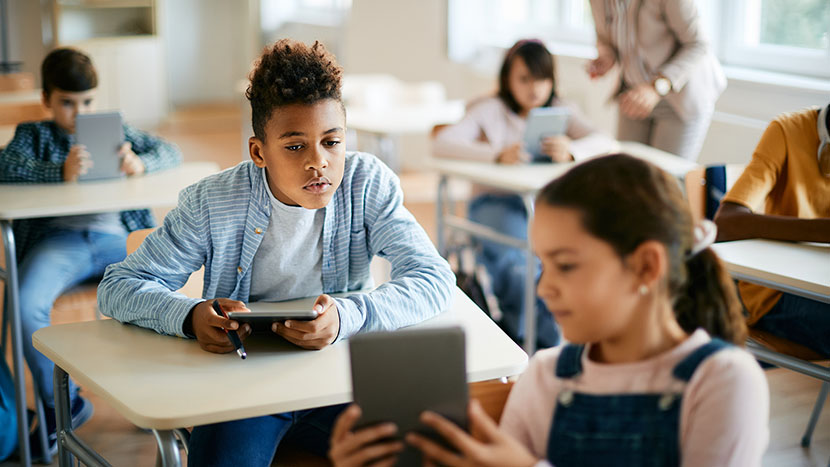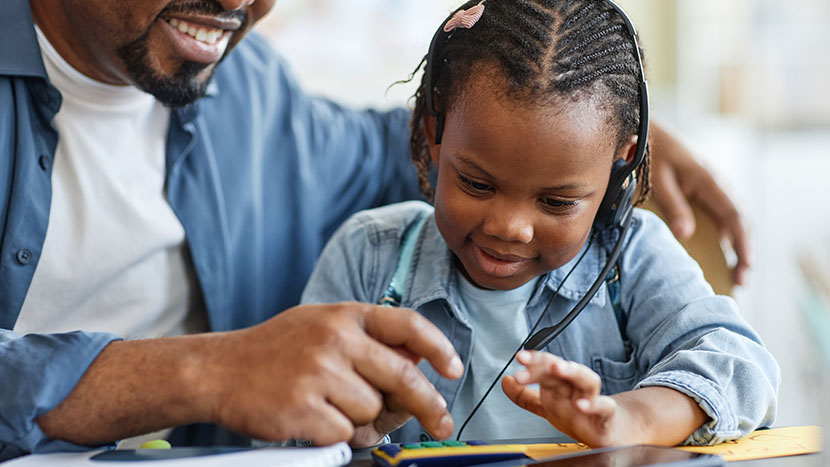Research Shows That Game-Based Learning Works!
Technology has been advancing at unprecedented rates, and with these advancements we see vast changes in how we interact with the world and each other. A key interaction that is changing is how we approach teaching and learning; including how we can use technology to our advantage in terms of bettering education as a whole. A major way that tech is entering the education world is through game-based learning and gamification.
The Rise of Game-Based Learning in STEM
Along with technology, teaching and learning methods have been changing through time. Currently, technology has made it possible for us to greatly improve effective teaching approaches. For example, interactive tools such as game-based learning have proved to be beneficial for STEM (Science, Technology, Engineering, and Mathematics) education.
A major reason for its effectiveness is that it is highly engaging, which keeps kids way more interested in the subject matter; the same subject matter that they would often consider “boring” or “too difficult.” In addition, game-based learning (using digital elements like game play) can be better at teaching a deeper level of learning than the traditional methods like the typical classroom environment. In fact, gamification techniques have been shown to dramatically improve learning outcomes in learners when compared with standard instruction.
Gamification vs. Game-Based Learning
Before we dive into it, some quick definitions.
Gamification is the act of adding point systems, rewards, levels, and other elements to learning that motivate learners to complete tasks. Game-based learning on the other hand is using an actual game that is played in order to learn. While almost all game-based learning will have a strong element of gamification, gamification can be applied to teaching methods without game-based learning. For example, a teacher may assign points to students who read a number of books each week, allowing them to “level-up” or appear on a leaderboard, this is gamification. Games that are made for learning will almost always have gamification of learning, where learners are given some reward for completing learning tasks,
Essentially, gamification is applying rewards, points, and levels to learning, while game-based learning refers to actual games that learners play in order to understand concepts. Game-based learning almost always includes gamification but gamification can be done without game-based learning,
Gamification Works
A meta-analysis on gamification in learning showed an overall positive effect of gamification for student’s learning and student performance in school. But why does it work?
Well, the analysis of 32 qualitative studies indicated that gamification fosters enthusiasm, making the course more enjoyable for learners. Additionally, game-based learning can promote goal setting, motivating the participants to set higher goals by completing more tasks.The easy-to-see reinforcement of their efforts provided in a gamified model can satisfy their need for recognition, make them proud of their efforts, and increase willingness to participate in activities. Thus, this method can promote self-efficacy and skills development in a variety of ways. As Pratama & Setyaningrum (2018) have demonstrated, students can improve cognitive and affective abilities, problem-solving approaches, digital literacy, and understanding of concepts through this type of learning. as an added bonus, game-based learning can help save teachers time!
Key Elements to Gamified Learning
Game elements and design are a key component in the efficiency of learning, these can include leaderboard and ranks, points, badges, progress bar, challenges, etc. Most platforms use multiple combinations of these tools to create a fun learning atmosphere. For example, Huang and Hew (2018) show that badges and leaderboards can guide users to targeted learning activities by increasing psychological satisfaction and motivation. Also, providing feedback on learners’ performance can lead to competence satisfaction, enabling them to engage in self-evaluation and correction. In this way, the point and leaderboard systems are a useful feedback mechanism to improve task performance and enjoyment. Consequently, game-content encourages students to enjoy learning without neglecting the subject matter
An Example of Game-Based Learning
Game-based learning is a powerful tool for STEM education. For instance, “GeoGame Adventure” is an educational game used as a model for studying. This game is based on a problem solving method to learn mathematics. It consists of several levels in which the player canmove to the right or left until reaching the finish line. Students pass various stages of problem solving in order to advance to the next round.If the answer is wrong, the life of the game character will be reduced; otherwise, points are gained to continue to the next level. Studies have shown that the use of educational games could increase the subject learning outcome in STEM education such as mathematics. This kind of interactive game helps students to develop problem solving skills and at the same time, it facilitates the understanding of certain mathematical concepts. There are also new Elearning platforms on the rise, such as the YGBVERSE, which is set to launch within the next two years.
Who is Game-Based Learning For?
Game-Based learning can be used in a wide range of ages, but it is usually preferred by kids and teenagers rather than older players. Not only do they enjoy it, game-based learning improves critical thinking skills and deep understanding of a target subject in young learners. Playing a game while learning is an active and flexible way to acquire knowledge, which offers many advantages as well. It improves the brain’s capacity to memorize things and boosts the ability to retain information for a longer period of time. Additionally, as the majority of games demand that children think in a faster way, they need to use logic to solve problems and complete levels. It helps kids to develop their logic, accuracy, and ability to think, as well as encouraging long-term motivation to learn. By using this tool, abstract concepts can be better comprehended with tangible shapes, which makes it easier to look at them from a different perspective and deepen the understanding of basic concepts. Thus, learning through gamification can be used for engaging kids in subjects they might otherwise avoid when using traditional methods. These are the consequences of enjoying at the same time of learning!
In conclusion
Game-based learning is a powerful tool for educators everywhere and has proven to be effective in helping kids learn better, and be more motivated to learn. There are many teachers and student who can benefit from game-based learning, which shows a need for new game-based learning platforms .


































































































